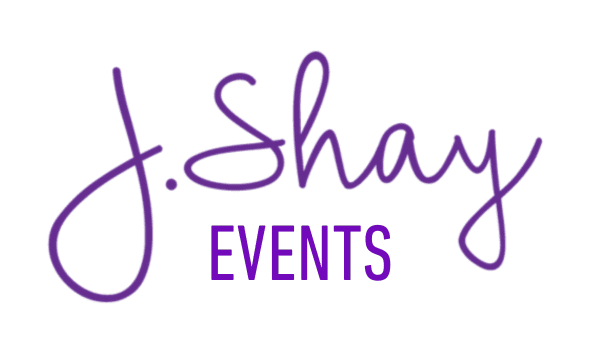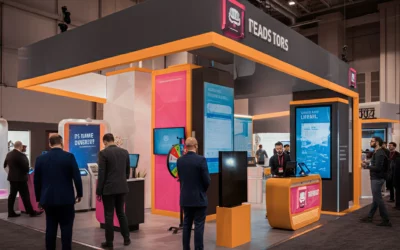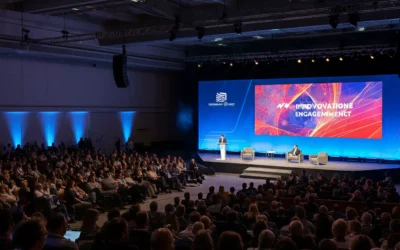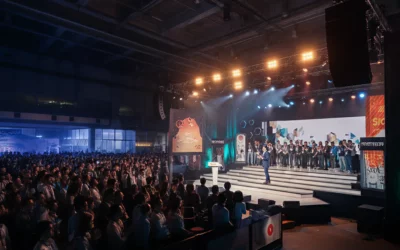Since the start of this pandemic, event planners have been scrambling to pivot and focus on planning virtual or hybrid events. And while some have enjoyed higher profits and increased attendance, as compared to live events, many are finding the format to be… challenging, to say the least.
Recent research published in The Virtual Event Tech Guide found that 21% of event planners listed “lack of technical knowledge” to be their biggest challenging when pivoting to a virtual environment. But 31% of respondents cited attendee engagement as what they struggled the most with. Engagement, by far, got the most votes of any challenge that is currently being faced by planners.
For the time being, virtual and hybrid events remain the safest options for business events, and this will likely be the case for the foreseeable future. So how can event planners ensure that attendees to their virtual or hybrid events are fully engaged? Event gamification.
What is Event Gamification?
Gamification refers to the practice of taking the mechanics of a game, for example point systems, challenges, completion bars and narratives, and give them non-gaming applications in marketing strategies, the workplace and business events. Event gamification works so well because it accesses the emotions and motivations of attendees. Gamification leverages psychology to drive particular behaviors to achieve desired event outcomes.
Let’s take a quick dip into the human brain, shall we…
Ooh, it’s dark in here. But you can just sort of make out some squiggly bits, which are neural pathways. One of these neural pathways, the one without any cobwebs, is the reward pathway. Event gamification works so well because it causes the dopamine effect. Basically, every time we experience something positive, dopamine, a neurotransmitter, is released into the reward pathway of the brain and the sensation is veeeery niiiiiice, and this reinforces our behavior. We learn to do that exact same thing over and over to get that reward – that hit of dopamine.
This is why social media can be so addictive to some people. Having one of your posts get liked or shared causes dopamine to be released into that reward pathway. Event gamification also deals with this instant feedback and instant gratification via scores, rewards and an overall feeling of accomplishment. And because of these neural rewards, attendees get constant boost of encouragement to keep going, keep engaging.
Ok, let’s get out of here. Please mind your step when exiting the brain. (see what I did there?)
Why Use Event Gamification?
Now that you know what event gamification is, let’s explore some of the reasons more event planners should be using it:
Increased Engagement
Let’s get the most obvious benefit out of the way, and that is increased attendee engagement. Gamification not only causes attendees to tune in more to the content you’ve developed, it facilitates better communication among attendees as well. Event gamification helps break the ice, get conversations going, and creates more opportunities for networking.
A Sense of Flow
Have you ever been so involved in an activity that you enjoyed, you completely lost all sense of time? Psychologists call this activity state “flow.” When we are in the “flow” we are experiencing something so enjoyable we will continue to do that activity even if it means going without food and holding our bladders.
Event gamification helps planners create this sense of flow for their attendees. Which would you rather have: attendees checking their watches or so involved in what they’re doing they lose complete sense of time?
It Creates a Fun Environment
Sure, your attendees have come to your event to learn trade secrets and gain actionable insights. But all work and no play makes for a very dull event!
Event gamification creates a real sense of fun. And which events do you think people tend to remember and sign up for again, the ones where they sat passively, listening to someone speak, or the one where they took part in a scavenger hunt?
How to Get Event Gamification to Work for Your Next Event
To be successful with event gamification, it’s important that you follow a few guidelines:
Know Your Audience
You need to understand the psychology of your players (attendees) before you start to make any gamification plans. We recommend you follow The Bartle Test. Dr. Richard Bartle categorized gamers into four categories based on their motivation to play: achievers, explorers, socializers, and killers.
- Achievers – Their sole motivation is winning and rewards spur them on.
- Explorers – These guys and gals enjoy learning and experiencing new things. Gamesa re a way for them to do this.
- Socializers – Games are a way to make contacts, collaborate and network.
- Killers – There’s winning, and then there’s decimating the competition. These guys and gals are highly competitive and enjoy the thrill of feeling powerful.
If you know that a large segment of your audience falls into one of these four categories, then you can tailor your gamification strategy to them specifically. More than likely you’ll find your audience is a mix of these four and you’ll want to satisfy the needs of all four player types. This way you can engage almost everyone.
Have a Point
Don’t just gamify your event to do it, have a point and a goal. As an example, if your goal is to help your attendees network, then you’ll want to consider games like networking bingo or speed networking.
On the other hand, if your overall goal is to help attendees retain information, you may want to have fun quizzes or interactive sessions where they can get points for answering polls or asking questions. Want to really activate your killer players? List the scores in a public leaderboard.
Use Intrinsic and Extrinsic Rewards
If you’re gonna have a game, you’ll also need a reward. In fact, your reward matters almost as much as the game itself. How can you ensure that the reward, as well as the game, will satisfy all of your attendees (or at least pretty darn close?)
Jane McGonigal, game designer and author, says in her book Reality Is Broken: Why Games Make Us Better and How They Can Change the World, “Extroverts tend to produce more dopamine in response to social rewards—smiling faces, laughter, conversation, and touch, for example. Introverts, in turn, are less sensitive to these social reward systems but highly sensitive to mental activity, such as problem-solving and puzzling and solo exploration.”
So you’ve got to select rewards that satisfy both criteria. The activities you plan should challenge and engage attendees, giving them recognition (and thus be intrinsically rewarding), while at the same time offer a tangible reward at the end in the form of free tickets, prizes, contacts, etc.
Create Some Buzz
Don’t forget to include event gamification into your event marketing strategy. You definitely want to build buzz and make sure all attendees are aware of it.
Final Thoughts on Event Gamification
Whether you’re planning a live event, virtual event, or hybrid event, your number one priority should be to ensure all attendees are thoroughly engaged. Event gamification not only helps to influence attendee behavior, leading to better outcomes, it also helps to elevate attendees’ emotional experience. And that means even more attendees will flock to next year’s event!
For help with event management software, including gamification, view our Services page or click here to contact us directly!
You might also like…
Top 10 U.S. Meeting Destinations for 2026
Successful corporate events don’t just happen — they’re built on smart decisions, starting with...
The Trade Show Prep Guide: Boost ROI Like a Pro
Trade shows are a powerful way to elevate your brand's visibility, connect with potential...
President’s Club 2026 Ultimate Gift Guide
Luxury, Personalization, and Impact for Unforgettable Incentive Travel President’s Club isn’t just...
The Role of Corporate Event Managers is Evolving
Corporate events aren’t what they used to be. Gone are the days of basic cocktail hours and...
Revitalizing Sales Kickoffs: Strategic Insights for 2026
Gone are the days when Sales Kickoffs (SKOs) were just annual corporate pep talks. Today's SKOs...
Planning for Performance: The 2026 Guide to Mastering Incentive Travel
Here's Why Incentive Travel is Your Secret Weapon in 2026... Gone are the days when incentive...







